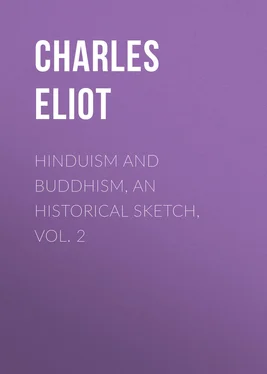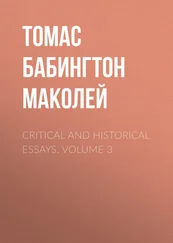Charles Eliot - Hinduism and Buddhism, An Historical Sketch, Vol. 2
Здесь есть возможность читать онлайн «Charles Eliot - Hinduism and Buddhism, An Historical Sketch, Vol. 2» — ознакомительный отрывок электронной книги совершенно бесплатно, а после прочтения отрывка купить полную версию. В некоторых случаях можно слушать аудио, скачать через торрент в формате fb2 и присутствует краткое содержание. Жанр: foreign_religion, Философия, Религиозная литература, foreign_psychology, foreign_antique, foreign_prose, на английском языке. Описание произведения, (предисловие) а так же отзывы посетителей доступны на портале библиотеки ЛибКат.
- Название:Hinduism and Buddhism, An Historical Sketch, Vol. 2
- Автор:
- Жанр:
- Год:неизвестен
- ISBN:нет данных
- Рейтинг книги:4 / 5. Голосов: 1
-
Избранное:Добавить в избранное
- Отзывы:
-
Ваша оценка:
- 80
- 1
- 2
- 3
- 4
- 5
Hinduism and Buddhism, An Historical Sketch, Vol. 2: краткое содержание, описание и аннотация
Предлагаем к чтению аннотацию, описание, краткое содержание или предисловие (зависит от того, что написал сам автор книги «Hinduism and Buddhism, An Historical Sketch, Vol. 2»). Если вы не нашли необходимую информацию о книге — напишите в комментариях, мы постараемся отыскать её.
Hinduism and Buddhism, An Historical Sketch, Vol. 2 — читать онлайн ознакомительный отрывок
Ниже представлен текст книги, разбитый по страницам. Система сохранения места последней прочитанной страницы, позволяет с удобством читать онлайн бесплатно книгу «Hinduism and Buddhism, An Historical Sketch, Vol. 2», без необходимости каждый раз заново искать на чём Вы остановились. Поставьте закладку, и сможете в любой момент перейти на страницу, на которой закончили чтение.
Интервал:
Закладка:
The undoubted works of Aśvaghosha treat the Buddha with ornate but grave rhetoric as the hero of an epic. His progress is attended by miracles such as Indian taste demands, but they hardly exceed the marvels recounted in the Pali scriptures and there is no sign that the hero is identified, as in the Ramayana of Tulsi Das or the Gospel according to St. John, with the divine spirit. The poet clearly feels personal devotion to a Saviour. He dwells on the duty of teaching others and not selfishly seeking one's own salvation, but he does not formulate dogmas.
The name most definitely connected with the early promulgation of Mahayanism is Nâgârjuna. 209 209 Nâgârjuna cannot have been the founder of the Mahayana for in his Mahâ-prajñâ-pâramitâ-śâstra (Nanjio, 1169, translation by Kumârajiva) he cites inter alia the Lotus, the Vimalakirti-sûtra, and a work called Mahâyâna-śâstra. See B.E.F.E.O. 1911, p. 453. For Nâgârjuna see especially Grünwedel, Mythologie , pp. 29 ff. and the bibliography given in the notes. Jour. Budd. Text. Soc. V. part iv. pp. 7 ff. Watters, Yüan Chwang , pp. 200 ff. Târanâtha, chap. XV and Winternitz, Ges. Ind. Lit. II. i. pp. 250 ff.
A preponderance of Chinese tradition makes him the second patriarch after Aśvaghosha 210 210 He is omitted from the list of Buddhabhadra, giving the succession according to the Sarvâstivâdins, to which school he did not belong. I-Ching classes him with Aśvaghosha and Aryadeva as belonging to the early period.
and this agrees with the Kashmir chronicle which implies that he lived soon after Kanishka. 211 211 Râjataranginî, i. 173, 177.
He probably flourished in the latter half of the second century. But his biographies extant in Chinese and Tibetan are almost wholly mythical, even crediting him with a life of several centuries, and the most that can be hoped is to extract a few grains of history from them. He is said to have been by birth a Brahman of Vidarbha (Berar) and to have had as teacher a Sudra named Saraha or Râhulabhadra. When the legend states that he visited the Nâgas in the depths of the sea and obtained books from them, it seems to admit that he preached new doctrines. It is noticeable that he is represented not only as a philosopher but as a great magician, builder, physician, and maker of images.
Many works are attributed to him but they have not the same authenticity as the poems of Aśvaghosha. Some schools make him the author of the Prajñâ-pâramitâ but it is more usually regarded as a revelation. The commentary on it known as Mahâ-prajñâ-pâramitâ-śâstra is generally accepted as his work. A consensus of tradition makes him the author of the Mâdhyamika 212 212 Edited in the Bibliotheca Buddhica by De la Vallée Poussin and (in part) in the Journal of the Buddhist Text Soc. See too Walleser, Die Mittlere Lehre des Nâgârjuna nach der Tibetischen Version übertragen , 1911: nach der Chinesischen Version übertragen , 1912.
aphorisms of which some account has been given above. It is the principal authority of its school and is provided with a commentary attributed to the author himself and with a later one by Candrakîrti. 213 213 The ascription of these works to Nâgârjuna is probably correct for they were translated by Kumârajîva who was sufficiently near him in date to be in touch with good tradition.
There is also ascribed to him a work called the Suhrillekha or friendly letter, a compendium of Buddhist doctrines, addressed to an Indian king. 214 214 The name of this king, variously given as Udayana, Jetaka and Śâtavâhana, has not been identified with certainty from the various transcriptions and translations in the Chinese and Tibetan versions. See J. Pali Text Soc. for 1886 and I-Ching Records of the Buddhist Religion (trans. Takakusu), pp. 158 ff. The Andhra kings who reigned from about 240 B.C. to 225 A.D. all claimed to belong to the Śâtavâhana dynasty. The stupa of Amarâvati in the Andhra territory is surrounded by a stone railing ascribed to the period 160-200 A.D. and Nâgârjuna may have addressed a pious king living about that time.
This work is old for it was translated into Chinese in 434 A.D. and is a homily for laymen. It says nothing of the Mâdhyamika philosophy and most of it deals with the need of good conduct and the terrors of future punishment, quite in the manner of the Hinayana. But it also commends the use of images and incense in worship, it mentions Avalokita and Amitâbha and it holds up the ideal of attaining Buddhahood. Nâgârjuna's authorship is not beyond dispute but these ideas may well represent a type of popular Buddhism slightly posterior to Aśvaghosha. 215 215 For other works attributed to Nâgârjuna see Nanjio, Nos. 1169, 1179, 1180, 1186 and Walleser's introduction to Mittlere Lehre nach der Chinesischen Version The Dharmasangraha, a Sanskrit theological glossary, is also attributed to Nâgârjuna as well as the tantric work Pancakrama. But it is not likely that the latter dates from his epoch.
In most lists of patriarchs Nâgârjuna is followed by Deva, also called Âryadeva, Kâṇadeva or Nîlanetra. I-Ching mentions him among the older teachers and a commentary on his principal work, the Śataśâstra, is attributed to Vasubandhu. 216 216 Nanjio, No. 1188.
Little is known of his special teaching but he is regarded as an important doctor and his pupil Dharmatrâta is also important if not as an author at least as a compiler, for Sanskrit collections of verses corresponding to the Pali Dhammapada are ascribed to him. Âryadeva was a native of southern India. 217 217 The very confused legends about him suggest a comparison with the Dravidian legend of a devotee who tore out one of his eyes and offered it to Śiva. See Grünwedel, Mythologie , p. 34 and notes. Polemics against various Hinayanist sects are ascribed to him. See Nanjio, Nos. 1259, 1260.
The next epoch in the history of Buddhism is marked by the names of Asanga and Vasubandhu. The interval between them and Deva produced no teacher of importance, but Kumâralabdha, the founder of the Sautrântika school and perhaps identical with Kumârata the eighteenth Patriarch of the Chinese lists, may be mentioned. Hsüan Chuang says 218 218 Watters, Yüan Chwang , II. p. 286. Hsüan Chuang does not say that the four were contemporary but that in the time of Kumâralabdha they were called the four Suns.
that he was carried off in captivity by a king who reigned somewhere in the east of the Pamirs and that he, Aśvaghosha, Nâgârjuna and Deva were styled the four shining suns.
Asanga and Vasubandhu were brothers, sons of a Brahman who lived at Peshawar. They were both converted from the Sarvâstivâdin school to Mahayanism, but the third brother Virincivatsa never changed his convictions. Tradition connects their career with Ayodhya as well as with Peshawar and Vasubandhu enjoyed the confidence of the reigning monarch, who was probably Candragupta I. This identification depends on the hypothesis that Vasubandhu lived from about 280 to 360 A.D. which, as already mentioned, seems to me to have been proved by M. Péri. 219 219 For Asanga and Vasubandhu see Péri in B.E.F.E.O. 1911, pp. 339-390. Vincent Smith in Early History of India , third edition, pp. 328-334. Winternitz, Ges. Ind. Lit. II. i. p. 256. Watters, Yüan Chwang , I. pp. 210, 355-359. Taranâtha, chap. XXII. Grünwedel, Mythologie , p. 35.
The earlier Gupta kings though not Buddhists were tolerant, as is shown by the fact that the king of Ceylon 220 220 Meghavarman. See V. Smith, l.c. 287.
was allowed to erect a magnificent monastery at Nâlanda in the reign of Samudragupta ( c . 330-375 A.D.).
Asanga founded the school known as Yogâcâra and many authorities ascribe to him the introduction of magical practices and Tantrism. But though he is a considerable figure in the history of Buddhism, I doubt if his importance or culpability is so great as this. For if tradition can be trusted, earlier teachers especially Nâgârjuna dealt in spells and invocations and the works of Asanga 221 221 Two have been preserved in Sanskrit: the Mahâyâna-sûtrâlankâra (Ed. V. Transl., S. Lévi, 1907-1911) and the Bodhisattva-bhûmi (English summary in Muséon , 1905-6). A brief analysis of the literature of the Yogâcâra school according to Tibetan authorities is given by Stcherbatskoi in Muséon , 1905, pp. 144-155.
known to us are characterized by a somewhat scholastic piety and are chiefly occupied in defining and describing the various stages in the spiritual development of a Bodhisattva. It is true that he admits the use of magical formulæ 222 222 Mahâyâna-sûtrâl. XVIII. 71-73. The ominous word maithuna also occurs in this work, XVIII. 46.
as an aid in this evolution but they form only a slight part of his system and it does not appear that the Chên-yen or Shingon sect of the Far East (the Sanskrit Mantrayâna) traced its lineage back to him.
Интервал:
Закладка:
Похожие книги на «Hinduism and Buddhism, An Historical Sketch, Vol. 2»
Представляем Вашему вниманию похожие книги на «Hinduism and Buddhism, An Historical Sketch, Vol. 2» списком для выбора. Мы отобрали схожую по названию и смыслу литературу в надежде предоставить читателям больше вариантов отыскать новые, интересные, ещё непрочитанные произведения.
Обсуждение, отзывы о книге «Hinduism and Buddhism, An Historical Sketch, Vol. 2» и просто собственные мнения читателей. Оставьте ваши комментарии, напишите, что Вы думаете о произведении, его смысле или главных героях. Укажите что конкретно понравилось, а что нет, и почему Вы так считаете.












